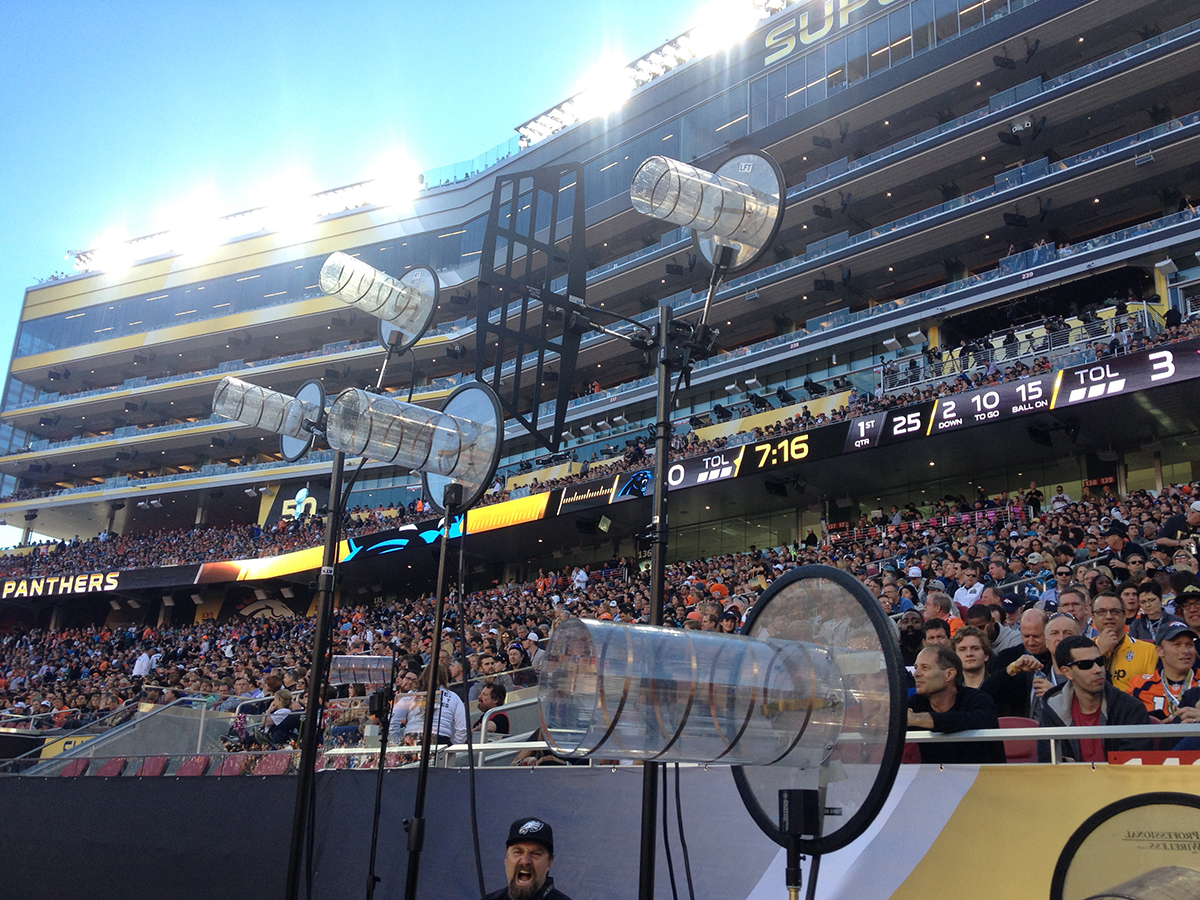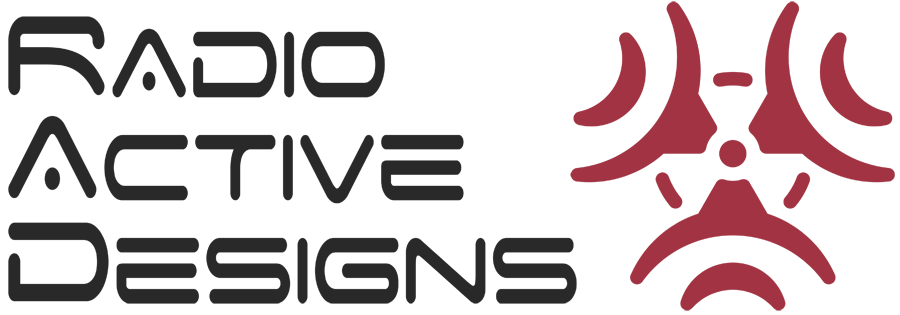
Communication during sporting extravaganzas like Super Bowl 50 is always difficult – the area is typically “RF challenged”, making the use of wireless particularly trying. Fortunately, eleven Radio Active Designs (RAD) UV-1G wireless intercom systems were on site during numerous events leading up to, during and after the game to ensure all lines of communication were kept open.
CP Communications, located in Elmsford, New York, was responsible for wireless audio transmission for pre- and post-game events as well as during the game itself (except for the half-time show). The company provided six UV-1G base stations along with 30 RAD packs to ensure production went off without a hitch.
To hear Loren Sherman, RF Coordinator for CP Communications explain it, his job during the Super Bowl is to “work with the logistics folks and make sure we bring gear that can be coordinated with all of the other gear on site – and there is a LOT of other RF gear on site. We brought along six UV-1G wireless intercom systems because I never have any problems getting it coordinated. San Francisco has very little space open for RF and I knew deploying six base stations wouldn’t be an issue, and that meant communication wouldn’t be an issue, either.”
Radio Active Designs UV-1G features Enhanced Narrow Band technology, which is 10 times more spectrally efficient than current FM technology. As a result, the UV-1G offers RF channels possessing an occupied bandwidth of a mere 25 kHz the audio characteristics one would expect from a traditional FM system. In addition, the system utilizes the relatively unused VHF range for all belt pack portable devices, leaving more room for operation of other wireless devices, such as wireless microphones and in-ear monitors – exactly what was required during the Special Olympics World Games.
“Another advantage to the RAD gear is that you can move it around and not anticipate any problems,” Sherman adds. “We had units in use throughout the week leading up to the game and I had no concerns about other RF in the area.”
Brian Ready, account manager and systems engineer for CP Communications, was RF Technician for the NFL pre-game events as well as during the game itself. Prior to the game he deployed one UV-1G unit at Super Bowl City in downtown San Francisco and another during the NFL Red Carpet Honors show held the night before the game. On game day he had one unit situated at the fan plaza outside of the stadium and two more in the stadium.
“The RAD gear was incredibly useful from an RF perspective,” Ready adds. “Without having band splits makes coordination much easier. The only UHF you have to worry about is for the base station, and that is minimal. The software provides options not available on standard BTR units which provides a lot of flexibility. I’ve used them consistently since the day we received them – it’s a great product.”
Jeff Watson was ATK Versacom’s RF PL Engineer for Super Bowl 50’s pre-game, anthem, halftime show and Lombardi Award presentation. He utilized five UV-1G base stations with 30 RAD bodypacks to make sure everything went smoothly.
“Because of the UV-1Gs bandwidth efficiency as well as open RF spectrum in the VHF range, I was able to give each user of the RAD systems their own Receive frequency to give them full duplex communication, unlike the 24 users of my other UHF FM systems – which were all simplex,” Watson explains. “Due to the UHF spectrum being so saturated, we had to use a 2 to 1 ratio for frequencies on those systems. This means we get two transmit frequencies and one receive frequency per system. In simpler terms, all four users of each UHF FM system are “stacked” on the same frequency, so only one person can speak at a time or they cancel each other out – like a 2-Way Radio. We didn’t have to do this with the RAD units. I also had a decent amount of spare frequencies for the RAD’s, which are hard to come by in an environment with over 1300 carriers in the air. Fortunately, I never had to use them as the VHF Spectrum remained very clean throughout the event.”
Watson, who had also used RAD systems during last year’s Super Bowl, adds, “Since the audio board upgrades, as well as some new firmware, there were significant improvements in audio quality of the RAD’s since last year’s Super Bowl. When using proper gain structure, everybody sounded really good and balanced. With our radio spectrum being continually auctioned off, RAD UV-1G’s are going to be the only system that is going to work on events of this size in the future. I could see a rack of 10 x 6 Drop Systems on Super Bowl 51 — or LI if the NFL returns to Roman Numerals.”
ATK Versacom also provided RAD TX-8’s for Transmit Combining and the new UHF/VHF DB-IC for Receivers along with an ATK Versacom proprietary RF over fiber system. “I had a “Hot Rod” of a system,” Watson concludes. “That is what is necessary for the scope of a project like The Super Bowl.”
ATK Audiotek provided sound reinforcement for Super Bowl 50’s pre-game, anthem, half-time and Lombardi Award events. James Stoffo was on site as ATK Audiotek’s entertainment RF engineer. His responsibilities included managing all of the wireless microphones, in-ear and intercom operations for the pregame show, anthem, referee, half time “Extravaganza” and post-game Lombardi Award presentation. Five UV-1G base stations were on site for communications throughout the day.
In addition, Radio Active Designs VF-1 VHF paddle antennas were also in use making is possible to cover the entire stadium with just one receiver antenna. A remote antenna was used in the tunnels for continuous coverage throughout the entire venue.
“This was probably the most difficult RF environment of any of the 17 Super Bowls I’ve ever done,” Stoffo notes. “Between the stadiums proximity to Silicon Valley, the abundance of white-space devices and an already crowded UHF spectrum, finding available bandwidth is a challenge. We used more RADs than UHF FM systems to keep RF as open as possible. As a matter of fact, we replaced a UHF FM system on site with a RAD because UHF was too congested. Communication is key at these events, it definitely saved the day.”
###
Photo Cutline: (Bottom) ATK Antenna Farm – one VHF RAD receiver antenna covered every belt pack on the field.
Download hi-res: http://bit.ly/1QyktG3
Media Contact
Julie McLean Clark
JMC Communications
O: 269 262 4842
M: 269 240 3175
juliemcleanclark@gmail.com
